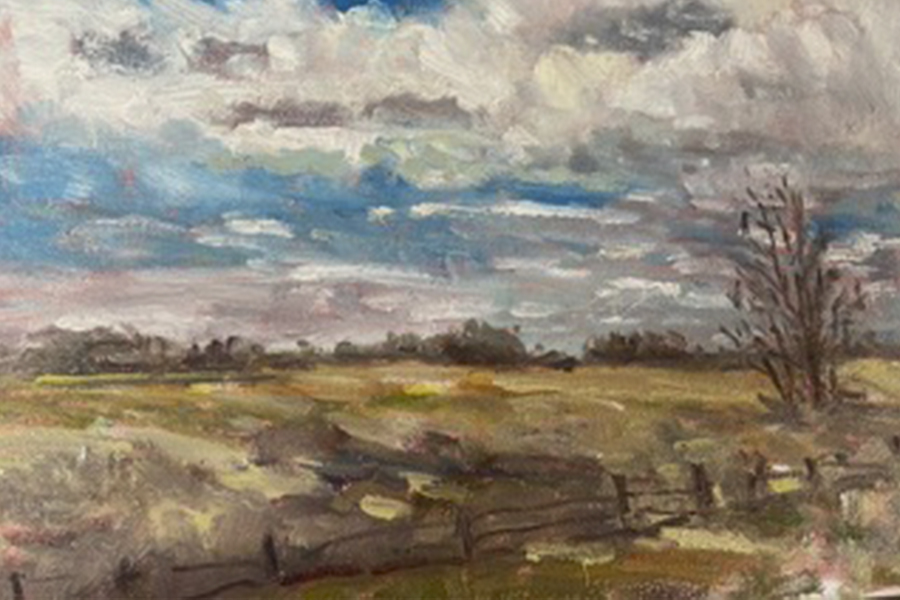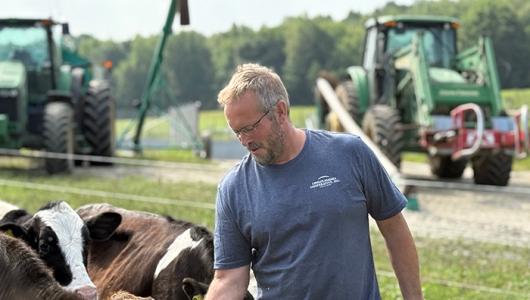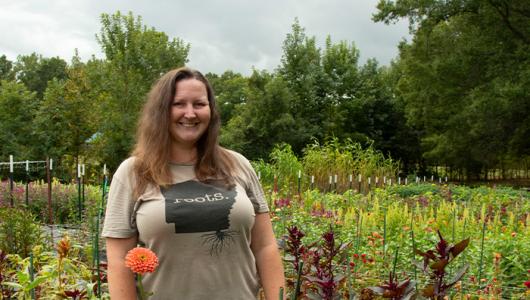Rose-Marie Demourkas Towle, an accomplished artist, lives on her ranch in Brookshire in Waller County, Texas. Recently, Rose-Marie closed a 110-acre Arborland Grassland easement project through the Natural Resource Conservation Service’s (NRCS) Agricultural Conservation Easement Program (ACEP). The project in which Rose-Marie participated, an ACEP-Agricultural Land Easement (ACEP-ALE), was funded by the Inflation Reduction Act.
The Inflation Reduction Act provides an additional $19.5 billion for NRCS to deliver financial and technical assistance to producers through existing USDA conservation programs, like ACEP. The Inflation Reduction Act included $1.4 billion in additional funding and it revised ACEP authority, providing funding for easements that will best reduce, capture, avoid, or sequester greenhouse gas emissions.

Rose-Marie’s land is adjacent to the historic Katy Prairie Preserve, which includes nearly 19,000 acres of Coastal Prairie Conservancy (CPC)-protected land west of Houston. The Arborland Grassland easement project is integral to CPC’s long-term landscape conservation goals, contributing to the health of the region for present and future generations.
“The opportunity to preserve the land through NRCS and the Coastal Prairie Conservancy made it an easy decision to abandon development and protect the land,” said Rose-Marie. “Together, the beautiful and pristine grass prairie is saved for cattle to roam and feed, birds to nest and even geese to rest in the low swallows of the land.”
Like many areas of the country, the greater Houston area is experiencing significant development pressure. Houston’s growth is consuming thousands of acres of coastal prairie, and the loss of these lands threatens natural resources and wildlife in the region. The urgent need to conserve land in the Greater Houston area is real as the city continues to grow.
“I realized that the beauty of the area was being consumed by huge tracts of subdivisions and increased traffic.” said Rose-Marie. “Sadly, even light pollution obscured the once dark sky.”

Funding for this easement was provided because the land is in an NRCS-identified national priority area, eligible for Inflation Reduction Act funding. These national priority areas include grasslands in areas of highest risk for conversion to non-grassland uses to prevent the release of soil carbon stores.
ACEP-ALE helps private and tribal landowners, land trusts, and other entities such as state and local governments protect croplands and grasslands on working farms and ranches by limiting nonagricultural uses of the land.

Open and connected spaces help maintain the biodiversity of the coastal prairie and provide habitat for wildlife. Keeping portions of the prairie preserved in working lands also conserves a way of life for farmers and ranchers.
“My little piece of nature is preserved for the future and wildlife,” said Rose-Marie. “Both flora and fauna will flourish and be enjoyed by generations of Texans in the grasslands of the Coastal Prairie.”
Katie Sierra is a development and communications associate at Coastal Prairie Conservancy.


